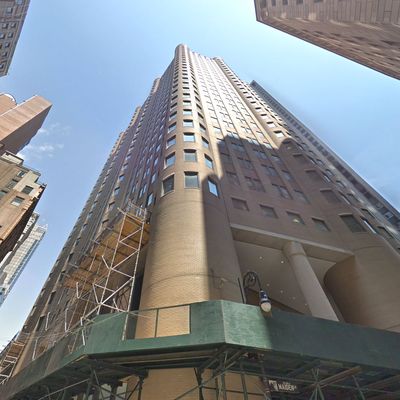
As the New York Times reported on October 1, Donald Trump has repeatedly mused that the Mexican border might best be defended with a moat full of alligators and snakes. His aides, apparently, took him seriously enough to estimate what such a thing might cost. (Imagine the GSA procurement process specifying, say, particular species or minimum tail length. Should the alligators be organically farmed? Can they pass a breakage test? Are caimans an acceptable off-season substitute?) But it turns out that the president has been daydreaming about moats full of alligators for a lot longer than that.
In 1984, Trump was just coming off the buzz of opening Trump Tower. His Trump Plaza on Third Avenue was about to open, and he had wildly ambitious plans to build more. And what better architect to design it than Philip Johnson, whose AT&T Building, with its pseudo-Chippendale roof, had landed Johnson on the cover of Time? Trump was no aesthete, but great press was something he understood. In fact, Trump Tower had been — as it’s described in Mark Lamster’s 2018 Johnson biography The Man in the Glass House — “a glitzified imitation of Johnson’s IDS Tower in Minneapolis, right down to its zigzag corner and retail atrium.” It wasn’t long before Trump was visiting Johnson’s offices, the Times reporter William E. Geist in tow. “Trump is mad and wonderful,” Johnson told Geist, as his staff brought out a model of a project called Trump Castle. It was bizarre, even for the ’80s: six cylindrical towers, like the round turrets at the corners of a medieval English castle, their floor plans overlapping slightly. And (you knew this was coming) surrounding the whole thing was a moat. With, yes, alligators. At Madison and 60th Street! (In the warm months, at least; no record seems to exist of whether the moat would be heated, or whether the gators would accompany the building’s older residents to Florida each winter.)
A drawbridge would allow residents to enter and exit their apartment building. Johnson — Harvard-educated, a disciple of the cool modernist Ludwig Mies van der Rohe — was now calling this his “most exciting project” ever. Implausibly, it had apparently been his own idea, not Trump’s, though Johnson called it “very Trumpish” — and he seemed to love it.
I called Lamster to ask him for more details about the building, which, needless to say, was never constructed. “This was the height of the postmodern period, so Johnson designed this Disney-on-Madison tower with these sort of crenellations at the top, and the turrets, gold-capped — and at the base there’s a moat because every castle needs a moat! And to protect the tenants, you need alligators to patrol.”
Was the moat intended, even farcically, as an actual security feature? These were, after all, the extreme high-crime years in New York, when rich people really did express concern about getting from their cars to their doorways. “I think it was more a caricature of safety rather than genuine concern,” Lamster offers. “We’re talking about Madison and 60th — I don’t think anyone has ever been held up there. Maybe three-card monte?” But certainly symbolically, I suggest, it was about keeping the rabble at bay — you could almost imagine the building staff at the ramparts pouring boiling oil on sidewalk beggars. “It was about conveying the idea of security,” Lamster agrees. “Although I guess it would have done that. Along with bringing lawsuits from children falling in and getting eaten by the alligators.”
Trump Castle did not happen, although a later casino project in Atlantic City reused its name, adding an apostrophe-S (or is that a hyphen?). But Johnson did manage to recycle his crenellated plans, after a fashion. “He went and built a boring version of it on Maiden Lane, across from the Fed,” Lamster reminds me. “You can see a humorless, leaden version of Trump Castle downtown, without any of the whimsy.” And in its half-forgotten Madison Avenue predecessor, we see the nascent President Trump: his childish King Ralph fantasies of regal life, his comically bad ideas, and his basic instinct to keep the wealthy protected and wall the serfs out. With a moat. And alligators.































